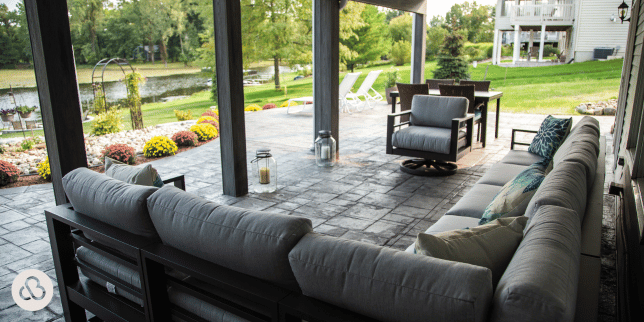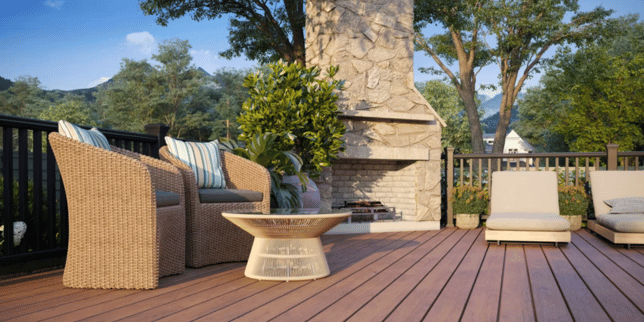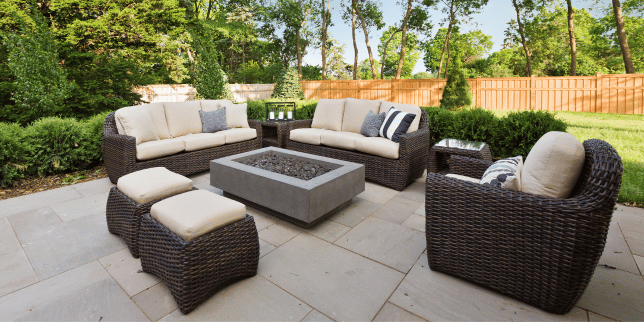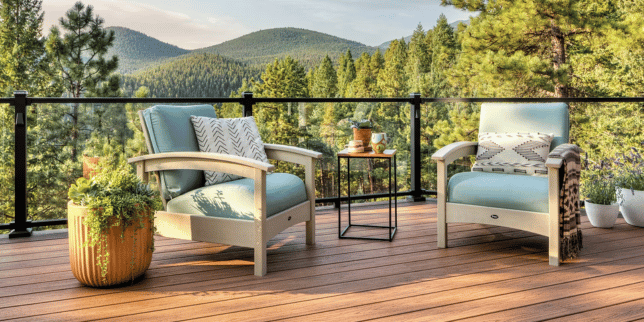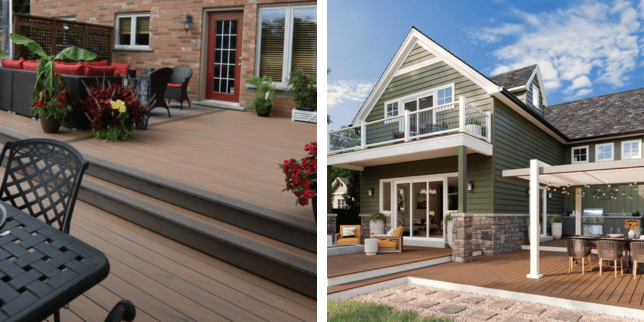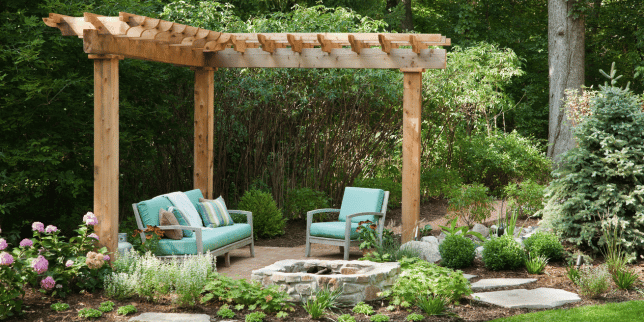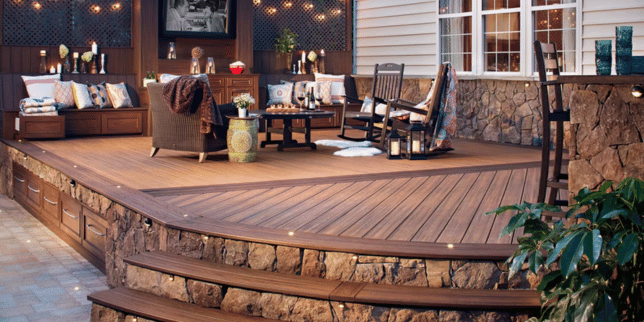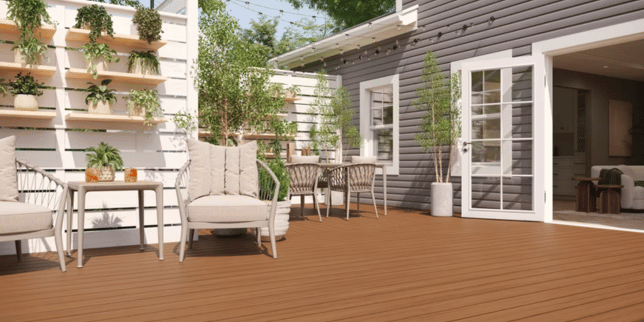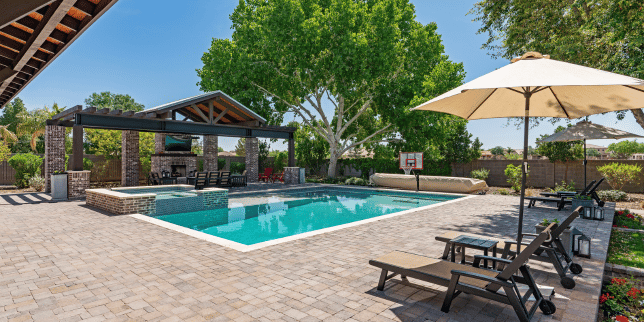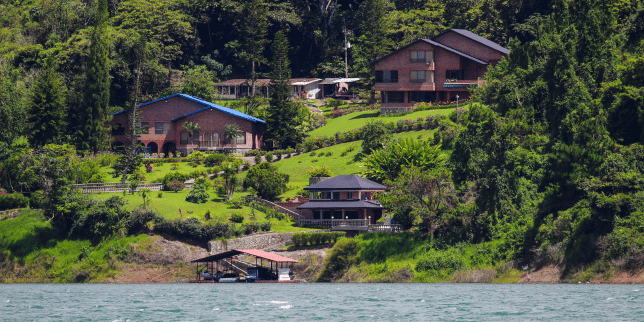Top 10 Differences Between Trex Composite and Wood Decking Material
October 19th, 2022
3 min read
.png?width=960&height=640&name=Stock-Canva_2023-12-19_DifferencesTrexCompositeWoodDecking_Blog-Header%20(1).png)
Top 10 Differences Between Trex Composite and Wood Decking Material
Adding a deck to your home gives your family a great space to spend time outside. When designing a deck, you will have to decide what material you want your deck made of.
The two most common deck materials to choose from are wood and composite.
Custom Built Design and Remodeling specializes in the designing and building of decks. We are well-versed in both composite and wood deck materials and have over 20 years of deck-building experience.
To help you make an informed decision for your deck project, we are going to provide you with 10 differences between Trex composite and wood decking materials.
1. Staining - Composite Doesn’t Need Staining While Wood Does
Wood decking requires staining to increase its life and protect it from water damage. There are many stain brands to choose from which come in a variety of colors to give your wood deck a much more desirable appearance.
Wood deck boards will need to be cleaned and typically stained annually to ensure your deck stays protected from the elements.
Composite decking does not need to be stained as it is protected from the elements by the composite layer.
2. Maintenance - Composite Requires Less Maintenance Than Wood
Once composite decking is placed down on the deck, it does not need much maintenance compared to a wood deck.
As stated above, wood decks need stain reapplied annually to maintain their protection, increasing maintenance costs. In addition, wood decks get dirty easier and will need to be cleaned more frequently than composite.
3. Color Options - Composite Comes in a Wider Array of Colors Than Wood
Wood comes in one color from the lumber yard. Wood color can be changed with stain but this must be reapplied regularly.
Composite decking materials can be purchased in a number of colors and textures that will not fade and do not require finish maintenance. The downside is that if you want to change your decking color, you will have to replace the boards.
4. Price - Composite is Initially More Expensive Than Wood, but Less Expensive Over Time
Different grades of wood and composite will affect actual cost but on average, wood decking is initially less expensive than Trex composite.
This higher cost of Trex compared to wood only pertains to materials and installation and doesn’t take yearly maintenance into account. Over the lifetime of your deck, choosing composite may actually be the less expensive option.
5. Rotting/Longevity - Composite Decking Will Not Rot
A huge benefit of composite decking is that it will not rot. Wood decks are prone to rotting. Exposure to the elements over time increases the breakdown of wood decking by rotting.
Trex offers a warranty of 25 years on its composite decking. Whereas wood decks have an average lifespan of 15 years.
6. Color Fade - Composite Decking is Fade-Resistant
The sun will damage traditional wood stains whereas composite coloring is less affected by sun exposure due to compounds in the composite outer shell.
Stain fading on wood decks can be mitigated by keeping up with maintenance and reapplying stains per the manufacturer’s recommendations.
7. Heat Retention - Composite Decking Feels Hotter Than Wood Decking
A common assertion of wood deck owners is that their composite decks retain heat better than wood decks would.
This can become an issue on hot summer days when you want to take your shoes off and use your outdoor living space. It might be uncomfortable on the bottoms of your feet.
8. Splintering - Composite Decking Will Not Splinter
Wood decking can splinter which can make people fearful of using their deck while barefoot. Composite decking has a hard outer shell that is composed of hardened plastic so splintering is avoided.
9. Green Sustainability - Trex Composite Decking is Made of Recycled Products and Wood Boards are Made Entirely of Trees
Composite materials from Trex are made of 95% recycled materials. Trex doesn’t need to cut down a single tree to manufacture its product.
Wood boards on the other hand are made entirely from trees that are cut down and must then be replanted.
10. Uniformity - Composite Boards are More Uniform Than Wood
Composite boards come from the factory without deformities, warping, knots, splits, or cracks. Wood on the other hand is much more prone to warping, splitting, and natural imperfections.
Natural wood comes direct from the lumber mill to your local lumberyard. The boards will have a natural bend to them and you will not have a hard time finding imperfections.
Composite decking is manufactured, so as a result, these imperfections do not occur.
Next Steps to Build Your Deck
When it comes to choosing the right decking material, the differences between Trex composite and wood are substantial. Your decision should align with your preferences, budget, and long-term goals for your outdoor space.
Throughout this article, we've explored the top ten differences between Trex composite and wood decking materials. From durability to maintenance, environmental impact to aesthetics, you now have a comprehensive understanding of what sets these materials apart.
At Custom Built, we understand that selecting the right decking material is a crucial step in transforming your outdoor space. With 15+ years of experience in design and remodeling, we're here to provide you with expert guidance and bring your outdoor vision to life.
Now that you've learned about the most important differences between two of the most popular decking material options, let's take a look at the inspiration, time, and money behind building your dream outdoor living space:
-
The Ultimate Deck Design Guide - Take advantage of trending deck designs for your space's framework, railings, and more.
-
How Long Does it Take to Build a Deck? - Explore how long your deck build should take to complete and the factors that affect its timeline.
-
What is the Average Cost of a Deck? - From smaller decks to grand entertainment spaces, this article explores how much your Michigan deck will cost.
Michael brings over 2 decades of building and remodeling experience to his position as the Owner and Visionary of Custom Built. Michael’s passion to make an impact on the home building industry has led him to serve for over ten years at the local and state Home Builders Association, culminating as President of the HBA of Michigan in 2020.












